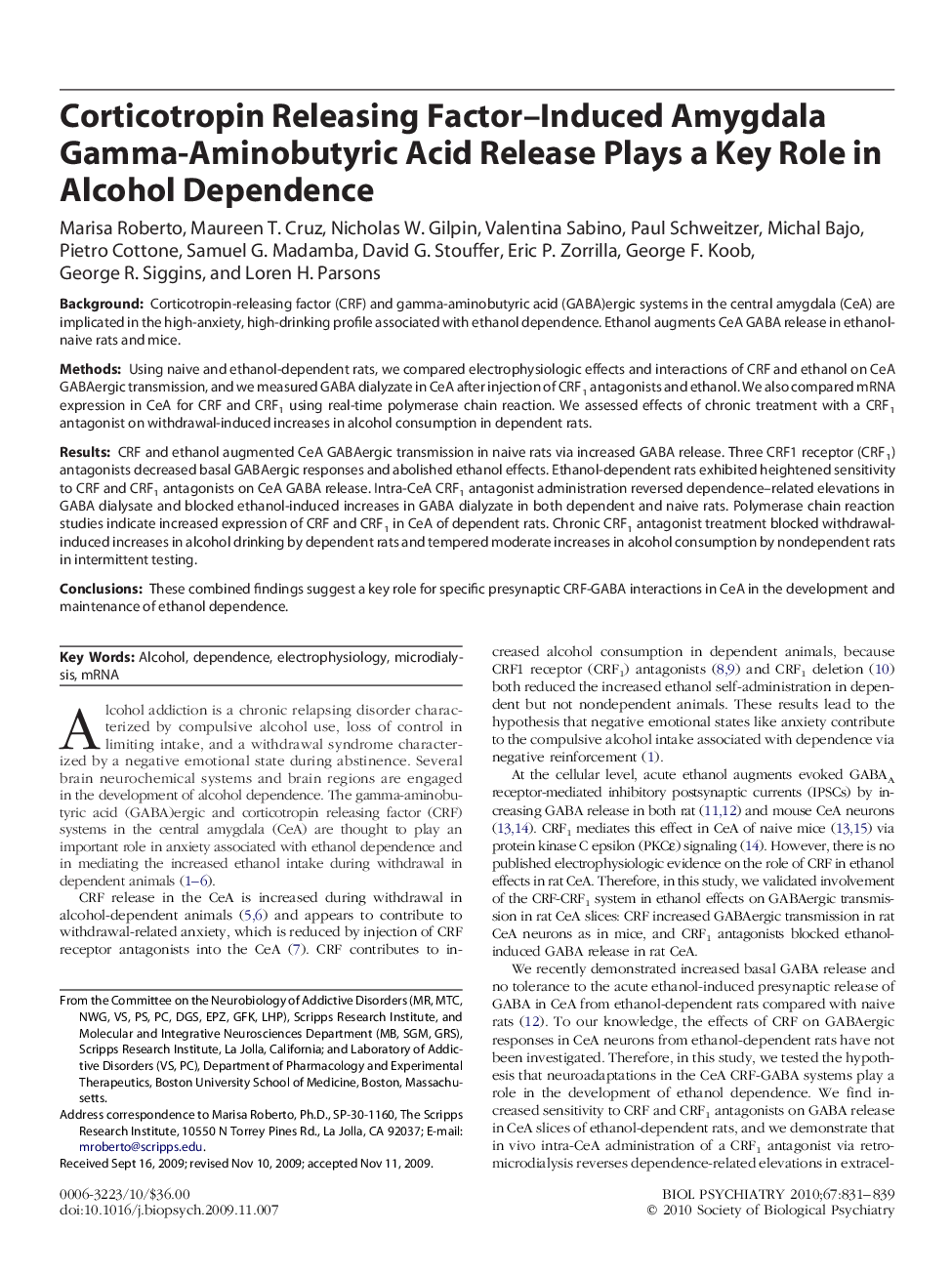| Article ID | Journal | Published Year | Pages | File Type |
|---|---|---|---|---|
| 4179136 | Biological Psychiatry | 2010 | 9 Pages |
BackgroundCorticotropin-releasing factor (CRF) and gamma-aminobutyric acid (GABA)ergic systems in the central amygdala (CeA) are implicated in the high-anxiety, high-drinking profile associated with ethanol dependence. Ethanol augments CeA GABA release in ethanol-naive rats and mice.MethodsUsing naive and ethanol-dependent rats, we compared electrophysiologic effects and interactions of CRF and ethanol on CeA GABAergic transmission, and we measured GABA dialyzate in CeA after injection of CRF1 antagonists and ethanol. We also compared mRNA expression in CeA for CRF and CRF1 using real-time polymerase chain reaction. We assessed effects of chronic treatment with a CRF1 antagonist on withdrawal-induced increases in alcohol consumption in dependent rats.ResultsCRF and ethanol augmented CeA GABAergic transmission in naive rats via increased GABA release. Three CRF1 receptor (CRF1) antagonists decreased basal GABAergic responses and abolished ethanol effects. Ethanol-dependent rats exhibited heightened sensitivity to CRF and CRF1 antagonists on CeA GABA release. Intra-CeA CRF1 antagonist administration reversed dependence–related elevations in GABA dialysate and blocked ethanol-induced increases in GABA dialyzate in both dependent and naive rats. Polymerase chain reaction studies indicate increased expression of CRF and CRF1 in CeA of dependent rats. Chronic CRF1 antagonist treatment blocked withdrawal-induced increases in alcohol drinking by dependent rats and tempered moderate increases in alcohol consumption by nondependent rats in intermittent testing.ConclusionsThese combined findings suggest a key role for specific presynaptic CRF-GABA interactions in CeA in the development and maintenance of ethanol dependence.
